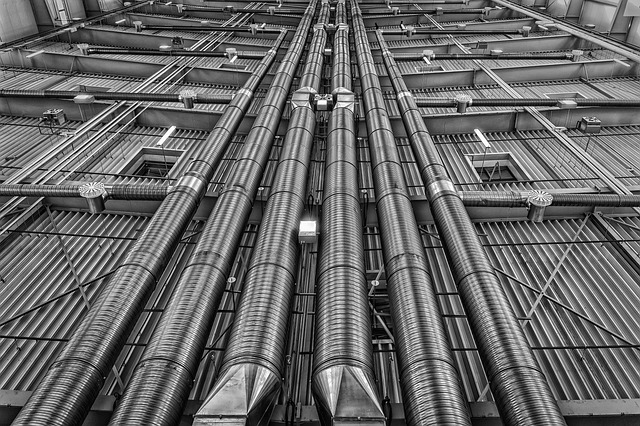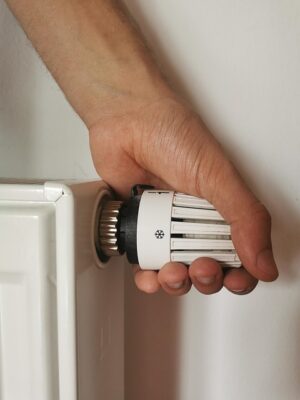Coreference resolution is a critical NLP process that links terms like "commercial entrance heating" to specific commercial air curtain heaters, ensuring consistency and accuracy in complex documentation. Challenges arise from inconsistent terminologies and rapid technological advancements, making it difficult to reference specific models across various documents. Advanced NLP tools automate this process, integrating with databases of heating system specifications for enhanced accuracy. This strategic approach is essential for providing relevant, up-to-date information on energy-efficient commercial air curtain heaters in retail, warehousing, and manufacturing industries.
Coreference resolution is a vital process that links references to specific commercial air curtain heaters across diverse documents. As the demand for these energy-efficient heating solutions grows, understanding coreference becomes crucial for maintaining consistency and accuracy in product information. This article explores the significance of coreference resolution in the context of commercial air curtain heaters, delving into challenges faced and effective strategies to enhance documentation clarity and user experience.
- Understanding Coreference Resolution and its Relevance to Commercial Air Curtain Heaters
- Challenges in Identifying and Referencing Commercial Air Curtain Heater Models Across Documents
- Strategies for Effective Coreference Resolution in the Context of Commercial Air Curtain Heater Documentation
Understanding Coreference Resolution and its Relevance to Commercial Air Curtain Heaters

Coreference resolution is a critical process in natural language processing (NLP) that involves identifying and linking words or phrases that refer to the same entity across different parts of text. In the context of commercial air curtain heaters, this technology plays a pivotal role in enhancing efficiency and user experience. When discussing various documents related to these heating systems, coreference resolution ensures consistency by correctly associating references to specific models, features, and applications.
For instance, when engineers, researchers, or marketers refer to “commercial entrance heating” or “door heating systems” within texts, coreference resolution helps in linking these terms to the appropriate commercial air curtain heater products. This is particularly important for industries like warehousing, retail stores, and manufacturing facilities where energy-efficient heating solutions, such as industrial air barriers and heated air curtains, are implemented for entrance climate control. By accurately resolving coreferences, stakeholders can efficiently navigate discussions, ensuring that every mention of a particular heater or technology aligns with the right information.
Challenges in Identifying and Referencing Commercial Air Curtain Heater Models Across Documents

Identifying and referencing commercial air curtain heater models across documents presents several challenges. One of the primary difficulties lies in maintaining consistency when multiple sources mention these heaters, often using different terminologies or model numbers. Commercial entrance heating solutions, for instance, can be described as heated air curtains, door heating systems, or warehouse entrance heating, each term carrying subtle nuances and variations. This inconsistency complicates the task of linking references and understanding specific models.
Furthermore, energy-efficient heating technologies evolve rapidly, introducing new models and improving existing ones. Keeping track of these changes across diverse documents—especially those spanning different periods—requires meticulous attention to detail. Air curtain technology advances have led to more sophisticated door heaters, offering enhanced performance in terms of climate control and energy efficiency. As a result, ensuring that references accurately reflect the latest advancements in commercial air curtain heaters is crucial for providing up-to-date information to readers interested in this domain, whether they operate retail stores, warehouses, or industrial facilities.
Strategies for Effective Coreference Resolution in the Context of Commercial Air Curtain Heater Documentation

Effective coreference resolution in commercial air curtain heater documentation involves strategic approaches to ensure clear and consistent references across diverse texts. Firstly, utilizing structured formatting and consistent terminology can significantly aid this process. By adopting standardized phrases for specific components of air curtain heaters—such as “commercial entrance heating,” “air curtain technology,” or “door heating systems”—document authors promote easier identification and linking of like elements throughout the corpus.
Moreover, leveraging advanced natural language processing (NLP) tools can automate coreference resolution to a considerable extent. These tools employ sophisticated algorithms to identify and map pronoun references, ensuring that instances of “it” or “they” in one document correspond accurately to the respective commercial air curtain heater components described elsewhere. Additionally, integrating these NLP solutions with comprehensive databases of door heating systems, warehouse entrance heating, and retail store heating specifications can further enhance accuracy by providing context-rich information for precise matching.
Coreference resolution is a vital process in managing and understanding complex documentation related to commercial air curtain heaters. By effectively linking references across documents, organizations can ensure consistent and accurate information dissemination. Overcoming challenges through strategic approaches, such as implementing structured data models and utilizing natural language processing tools, enables efficient navigation of vast knowledge bases. This, in turn, benefits users seeking specific models or troubleshooting guidance, enhancing overall productivity and user experience in the realm of commercial air curtain heater technology.






